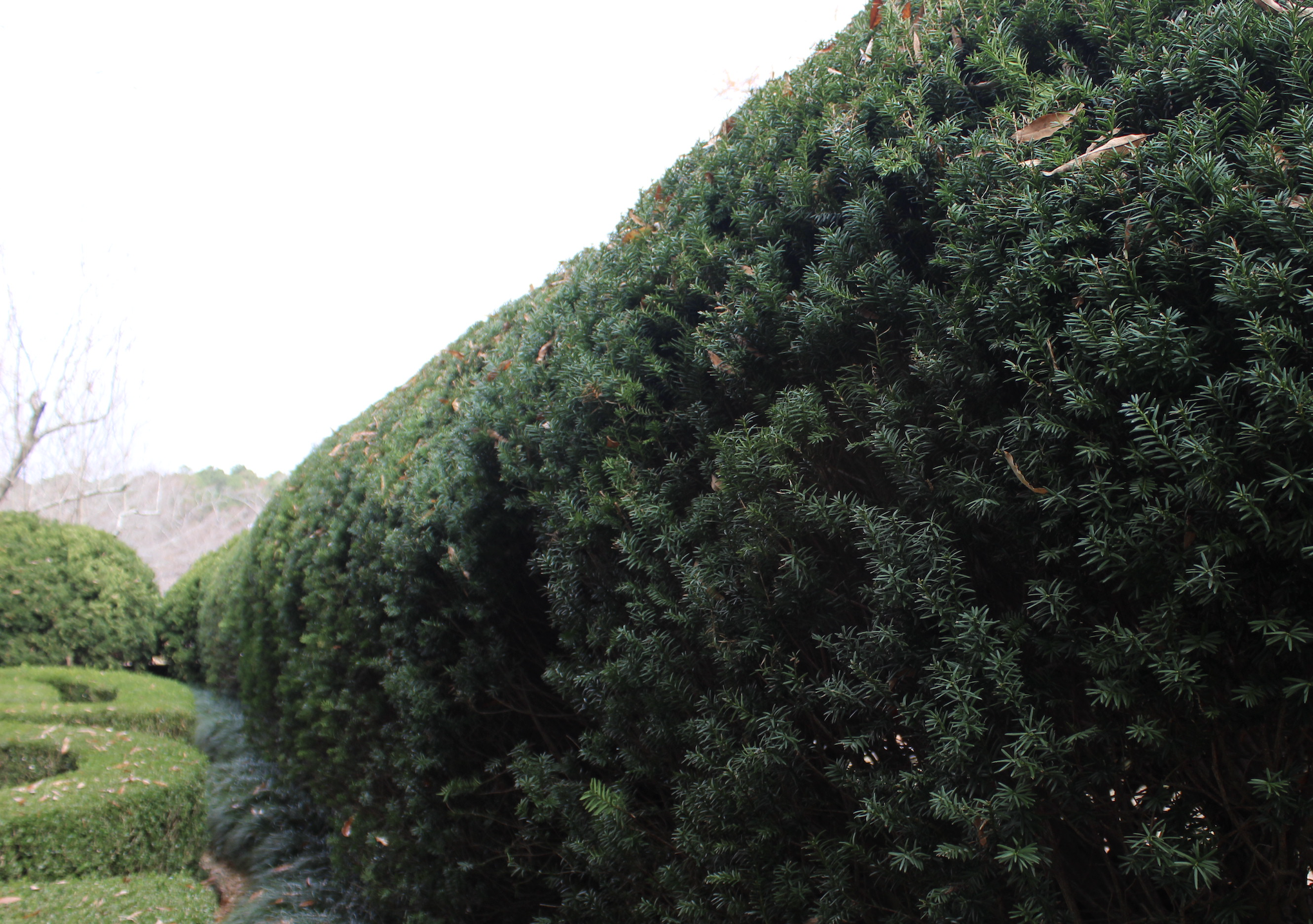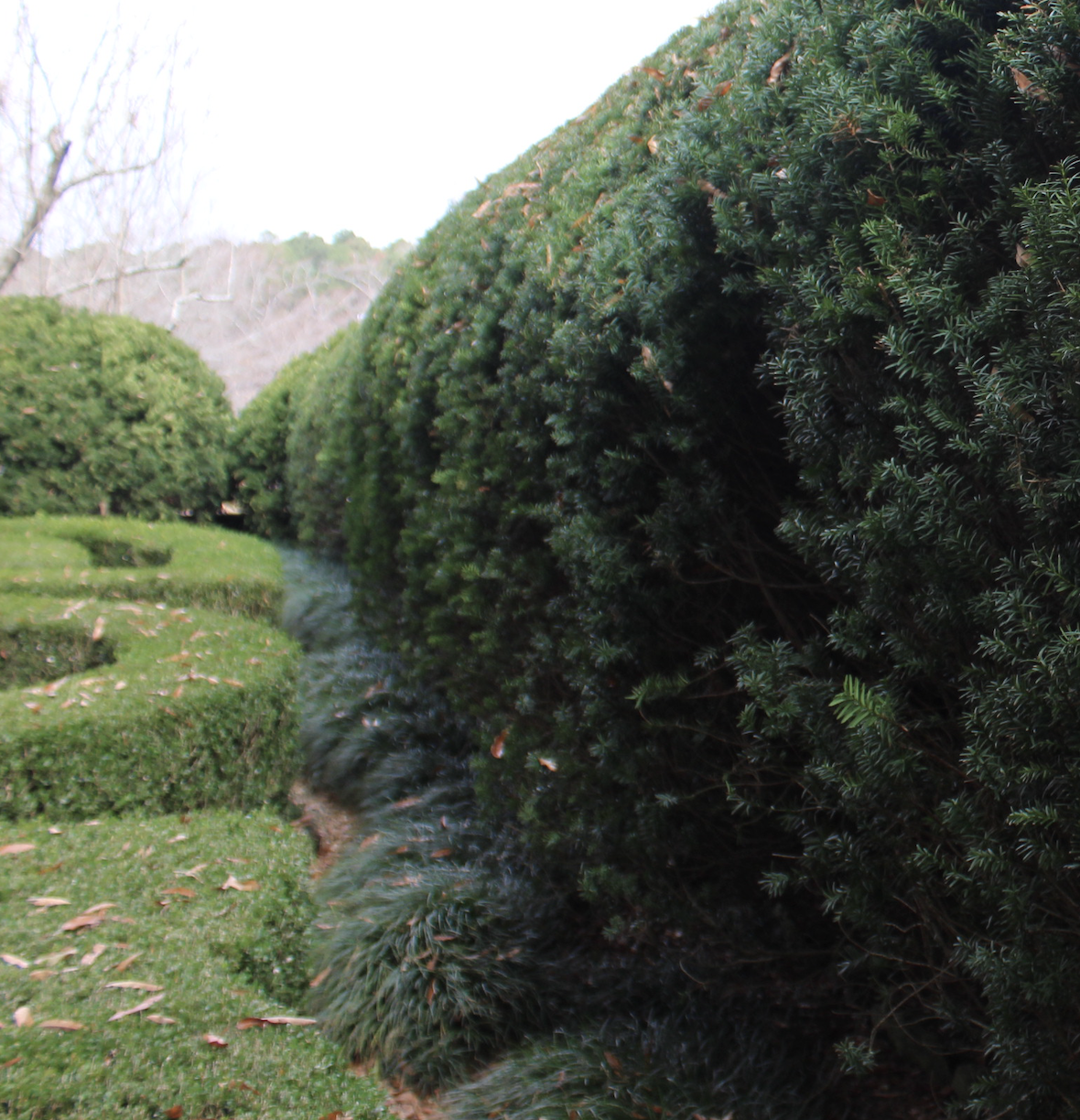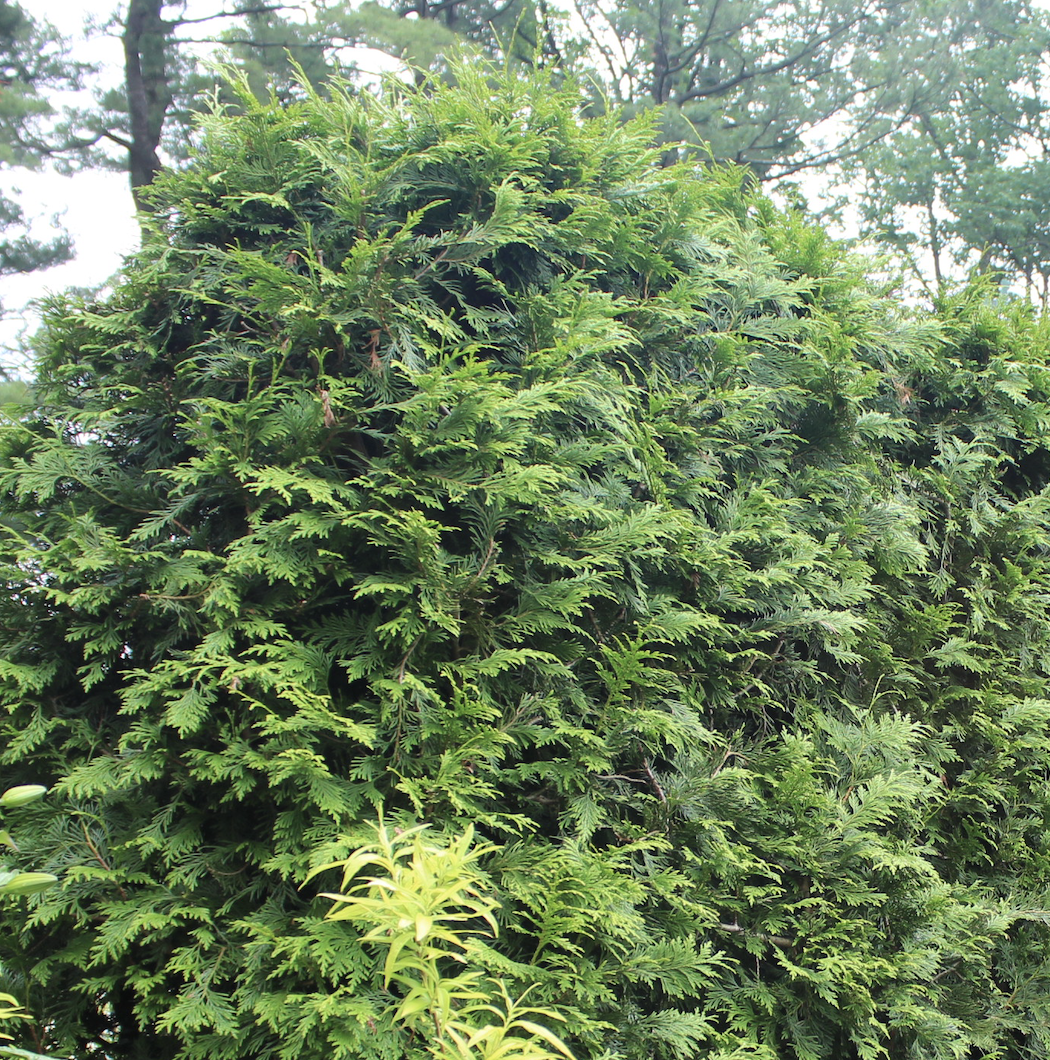Would you like to enclose your back yard so that you can enjoy your coffee on the patio without your neighbor’s security camera spotting your pajamas? Maybe you want to screen out your view of the neighbor’s yard art collection? Is your house buffeted by wind that you want to block? A hedge may be in order.
Hedges have been used for eons to define property lines. Traditionally used to keep animals in, they now are valued for their abilities to enclose a space, screen a view, and even lower utility costs by shading or providing a windbreak.
When considering a hedge, keep your site conditions and space limitations in mind. Be realistic — if the side yard is only 10 feet wide, do not even consider plants that grow wider than that. Determine how much sun and shade you have. Finally, look for overhead and underground utilities before planting.
Make great plant choices
When planted with room for their mature size, plants make lovely hedges that won’t require heroic pruning.
Consider planting a mixture of plants rather than just one type. This can give you multiple seasons of interest (like some plants that bloom in winter, while others bloom in the summer) and can provide a mixture of habitat and food sources for wildlife, such as birds and pollinators.
Most importantly, be patient. Decisions made for short-term benefits may result in long-term pain. When privacy or an undesirable view needs to disappear, we want it today, not five years from now. We choose plants that grow quickly, then space them close together.
Consider Leyland cypress, a plant that grows 3 to 4 feet per year and that can reach 50 feet in height and 30 feet in width. These trees need at least 15 feet from the center of one tree to the center of the next. Since this does not give the immediate infill and screening that we want, our tendency is to plant them 4 to 5 feet apart, in straight lines.
Yes, we will quickly have a solid screen, but in a short period thereafter the plants will begin to thin and die back because the plants are shading each other or because disease issues are worsened due to close plant spacing.
It is especially easy to make this mistake when starting with a small plant in a 3-gallon container from the store. Always choose the number of plants and their spacing based on mature growth expectations and patiently wait for that healthy hedge to establish.
Planting and installation
Locate your property line and honor it. Space your hedge at a distance from the property line that allows for the mature growth of the plants you choose. Avoid planting directly on the property line, as the mature plant will grow into your neighbor’s space.
Arrange in groupings of three to five of one type next to three to five of another, alternating by type of plant. If one plant develops a problem, it is not likely that it will take out the entire hedge.
Install your plants at the proper depth so that the root flare from the trunk is at the normal soil surface. Planting too deeply is a leading cause of plant death. Dig your planting hole at least twice as wide as the initial root ball.
Take care to provide at least 1 inch of water each week for the first year. Apply water slowly and at a low rate, such as with a soaker hose or drip irrigation, allowing it to soak into the soil.
Ready to plant a hedge and need some suggestions? Here are a few of our favorites:
- Glossy abelia (Abelia x grandiflora) has a 3- to 6-foot height and width and requires full sun to part shade. Given space and left alone rather than sheared, this rounded shrub will make a great hedge, reaching 8 feet. Its summer flowers are lovely.
- Camellia (Camellia sasanqua) has a 14-foot height, 8- to 12-foot width and requires full sun with afternoon shade. It's slow growing but offers fantastic blooms in winter to early spring, depending on the cultivar. Protection from winter winds is recommended.
- Oak Leaf™ holly (Ilex x ‘Conaf’) has a 15- to 20-foot height, 8-foot width and requires full sun to part shade. Oak Leaf™ holly shows conical growth when young, but matures into a more upright, pyramidal form.
- Emily Bruner holly (Ilex x ‘Emily Bruner’) has a 15- to 20-foot height, 8-foot width and requires full sun to part shade. ‘James Swan’ is the male pollinator which will be required if the beautiful red berries are desired.
- Inkberry (Ilex glabra) has a 6- to 8-foot height and width and requires full sun to part shade. The nondescript flowers on this native are a favorite of bees and other pollinators and birds like the black fruits later in the year.
- American holly (Ilex opaca) has a 15- to 30-foot height, 10- to 20-foot width and requires full sun to part shade. Winter wind may cause a problem with these hollies. ‘Merry Christmas’ is a popular cultivar for fruit-set. You will need a male plant to have berries on the females.
- ‘Grey Owl’ juniper (Juniperus virginiana) 5- to 6-foot height, 4- to 6-foot width and requires full sun. It's a drought-resistant cultivar of the native Juniperus virginiana (Eastern Redcedar) that has silver to gray foliage.
- Fragrant tea olive (Osmanthus fragrans) 10- to 20-foot height, 10- to 14-foot width and requires full to part sun. A lovely, simple evergreen with an oval-type shape, it has a fantastic fragrance from tiny white flowers in spring and fall.
- Japanese cleyera (Ternstroemia gymnanthera), also sold as Cleyera japonica, has a 10- to 15-foot height, 8- to 10-foot width and requires full sun to part shade. It will overgrow the sidewalk when used as a foundation plant but makes a nice hedge. It tends to be a little lumpy in its overall appearance.
- Sweet viburnum (Viburnum odoratissimum) has up to a 20-foot height and width and requires full sun to part shade. It makes a great informal hedge, and the flowers will attract butterflies and other pollinators.
- Leatherleaf viburnum (Viburnum rhytidophyllum) has a 10- to 15-foot height and width and requires full sun to partial shade. Its late-spring blooms attract butterflies, and berries will provide winter food to birds.
For more information on which plants may be best suited to your site and needs, please check out University of Georgia Cooperative Extension Bulletin 625, “Landscape Plants for Georgia,” at extension.uga.edu/publications.









